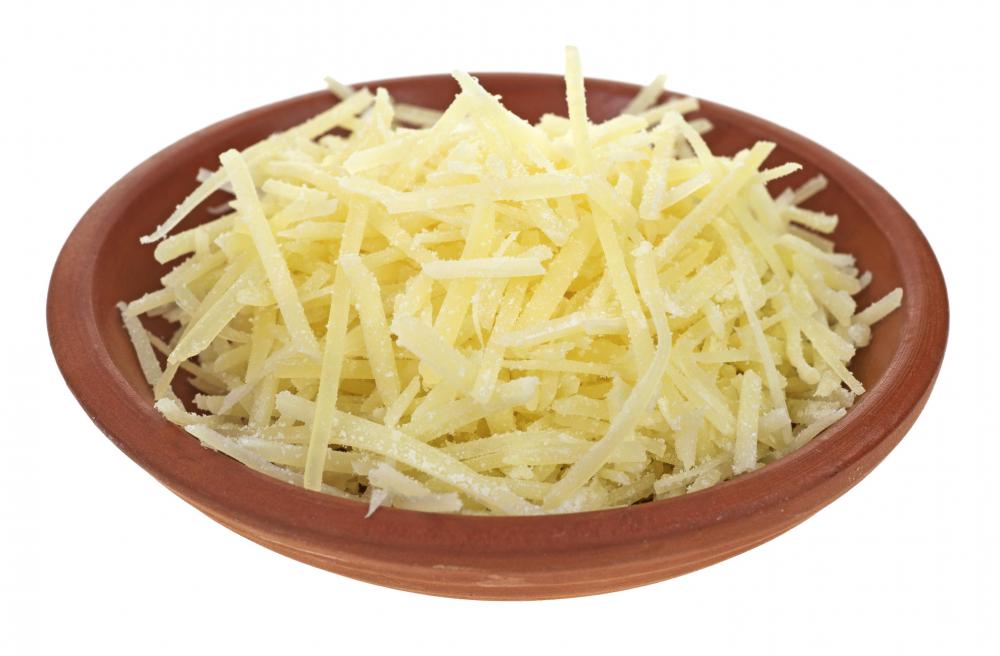At WiseGEEK, we're committed to delivering accurate, trustworthy information. Our expert-authored content is rigorously fact-checked and sourced from credible authorities. Discover how we uphold the highest standards in providing you with reliable knowledge.
How do I Choose the Best Parmigiano-Reggiano?
Simply by choosing parmigiano-reggiano, rather than “parmesan,” you have already made a choice that will typically ensure you have selected a high quality cheese. If you wish to be sure you select the best cheese for your purposes, however, then you should look for a piece of cheese that still has the rind on it so you can be sure of its origin. Whenever possible, you should also try to determine how long the cheese was aged and that it was aged at least one year. As long as you are purchasing the cheese from a reputable grocery store or deli, however, anything labeled as parmigiano-reggiano should be of excellent quality.
True parmigiano-reggiano is a type of hard cheese produced in the Parma region of Italy, from which it takes its name. The cheese is protected under European law as a Protected Designation of Origin, much like champagne, and so only cheeses produced in that region can use the name. Italy has also established Consorzio Formaggio Parmigiano-Reggiano, a consortium that oversees the production of the cheese to ensure that every wheel produced meets the highest standards.

The production of parmigiano-reggiano begins with milk from cows fed only on grass or hay and uses a combination of whole milk and naturally produced skim milk. This is combined with natural whey cultures and rennet from calves. The entire mixture is then cooked in large copper vats at precise temperatures before the solids are gathered and formed into wheels. The cheese is also bathed in a brine solution using Mediterranean Sea salts — this is the only flavoring added. Once the wheels of cheese have set, they are then aged for at least one year, though two years is also quite common.

Only cheeses produced using this process in the Parma region can truly be called parmigiano-reggiano, and this name, as well as the stamp of the consortium in Italy, is pressed into the outer rind of the cheese. Due to the protection of the parmigiano-reggiano brand, imitation cheeses typically use the name “parmesan” or a similar derivative. As long as you find cheese that was part of a wheel and still has the rind with “parmigiano-reggiano” stamped along it, then you know you are buying a quality cheese. Beyond that, you may want to try to determine how long the cheese was aged. Sometimes, cheeses that are aged longer are labeled “extra” on the rind.
AS FEATURED ON:
AS FEATURED ON:















Discuss this Article
Post your comments